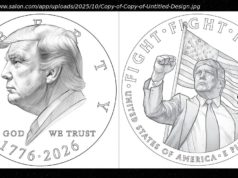Here’s what we learned from this year’s deals — and titles for the teams with the most interesting elements of trade season.
What the 2025 Major League Baseball trade deadline lacked in blockbusters it made up for in volume. From the first deal on July 24 to the last at 5:59 p.m. ET on July 31, teams made 63 trades and exchanged 179 players (including those to be named later).
One team dealt away 10 players from its big league roster. Another added seven new faces. Every team made at least one move. All of it served to reinforce an indisputable truth: Nobody does a deadline like baseball.
To honor that, we present an award ceremony like no other: Honors for the dozen most interesting elements of the 2025 deadline, starting with an atypical biggest winner.
Plenty of impact players moved to contenders at this year’s deadline, so for the A’s to be the big winners took the sort of trade that almost never gets made anymore. Heading into deadline season, Leo De Vries, the 18-year-old, switch-hitting shortstop who was the prize of the San Diego Padres‘ farm system, was considered off-limits in any trade conversation. Three days before the deadline, though, Padres president of baseball operations A.J. Preller showed a willingness to discuss him in potential deals for A’s closer Mason Miller and Guardians left fielder Steven Kwan. The A’s pounced, including Miller and left-hander JP Sears to net De Vries and a trio of right-handed pitching prospects: Braden Nett, Henry Baez and Eduarniel Nunez.
De Vries is the No. 3 prospect in baseball on Kiley McDaniel’s updated top 50 ranking. He has more than held his own in High-A as a teenager and figures to be in the big leagues — perhaps as a shortstop, perhaps at third base — by the time he’s 21. And there, he would join what’s quickly becoming one of the best lineups in baseball, loaded with Nick Kurtz, Brent Rooker, Jacob Wilson, Lawrence Butler, Shea Langeliers, Tyler Soderstrom and Denzel Clarke.
„I’m so pissed we didn’t get De Vries“, one evaluator said.
„They got De Vries for a guy who pitches one inning at a time“, another lamented.
These sorts of deals simply don’t happen. In a prospect-hugging world, deals that include top-five prospects are once-in-a-decade occurrences. Literally. The previous time a prospect of De Vries‘ caliber moved was when the Chicago White Sox landed the consensus No. 1 in MLB, Yoan Moncada, from the Boston Red Sox in the 2016 deal for Chris Sale. Sale was coming off five consecutive seasons receiving Cy Young votes.
De Vries & Co. were not the only Padres prospects to move. In deals that netted them Ryan O’Hearn, Ramon Laureano, Freddy Fermin, Nestor Cortes and Will Wagner, San Diego dealt 10 more players still rookie-eligible. Nobody is willing to sacrifice the future for the present quite like Preller.
Even if the A’s letter grade for the deadline matches their nickname, it doesn’t doom the Padres to an F. On the contrary, there are situations that warrant risky decision-making, and San Diego exemplifies that. Michael King, Dylan Cease, Robert Suarez and Luis Arraez are headed to free agency. Manny Machado isn’t getting any younger. The Padres‘ window is now. In the franchise’s 56-year history, it has made two World Series and won none. The previous time the Padres participated in the World Series, the year’s first two digits were 19.
The Padres now have the best bullpen in baseball, and O’Hearn, Laureano and Fermin round out a lineup with Machado, Arraez, Fernando Tatis Jr., Jackson Merrill, Jake Cronenworth and Xander Bogaerts. There is not a weak spot in their order or bullpen — and if King gets healthy, Nick Pivetta keeps shoving and Cease or Yu Darvish find themselves, they will be as dangerous as anyone in the National League come October. San Diego might wind up the No. 6 seed, but so were the Texas Rangers in 2023, and that didn’t stop them from getting their franchise’s first ring.
Give the Mariners credit. They got the best bat at the deadline in Eugenio Suárez, filled a position of need at first base with Josh Naylor, deepened their bullpen with left-hander Caleb Ferguson and did so without sacrificing Colt Emerson, Jonny Farmelo, Ryan Sloan, Jurrangelo Cijntje, Michael Arroyo, Lazaro Montes, Harry Ford or Felnin Celesten, all top 100-caliber prospects.
The new-look Mariners took three of four from the Rangers, with whom they entered their series tied, over the weekend. Seattle is almost fully healthy — and with Bryce Miller carving in his rehab assignment with a fastball tickling 98 mph and Victor Robles potentially back in September, the Mariners are two recalls away from having the scariest squad they have had since their resurgence started in 2021.
By no means did they fleece the Diamondbacks for Suárez and Naylor. Arizona needed pitching and got quality arms in both deals, and Tyler Locklear should be the team’s first baseman for the next half-decade. But this deadline was about an organization that has drafted as well as any in the 2020s shedding its relative conservatism to take a run in a year where there is no favorite. That’s worthy of some Robuchon potatoes.
The Cubs and Red Sox entered deadline season in search of the same archetype: a high-end starting pitcher with multiple years of club control. Both exited with that need unfulfilled.
Boston came close. The Red Sox were willing to part with a number of high-end prospects to land right-hander Joe Ryan from the Minnesota Twins. But that wasn’t expressed until the deadline was nearing, and the Twins were so deep in other talks to disassemble their roster, the prospect of moving Ryan had lost appeal. The Cubs landed Michael Soroka from the Washington Nationals the day before the deadline, but the prices on Ryan, Nationals left-hander MacKenzie Gore and right-handers Sandy Alcantara and Edward Cabrera of the Miami Marlins were too high for Chicago’s liking.
Which future stars are on the move this MLB trade season? Let’s rank the top prospects changing teams.
Kiley McDaniel »
The balance the majority of front offices try to strike is not easy. They want to win this year, but they also want to win going forward. What’s most telling is that these are two organizations with enormous expectations — and limitations. When the Red Sox dealt Yoan Moncada in 2016, they were consistently a top-five payroll team. Hoarding young, affordable players wasn’t nearly the imperative it is now, when for the past three seasons Boston has entered Opening Day with a payroll outside the top 10. When the Cubs made the Aroldis Chapman deal in 2016 and the Jose Quintana deal the next season, they were consistently a top-six payroll team. Over the past five years, their Opening Day payrolls have ranked 12th, 14th, 11th, ninth and 12th, respectively.
Could their front offices have ignored those realities and gone for broke? Sure. And none of their fans would have minded. For now. But if they lost in October this year and one of the prospects they moved broke out, not only would the deals be seen as failures, but because they would’ve been made against the advice of analytical models, they would’ve been of the you-should’ve-known variety.
Running a team isn’t easy. Running a team that has pulled back on payroll for seemingly no good reason is a particular sort of challenge.






